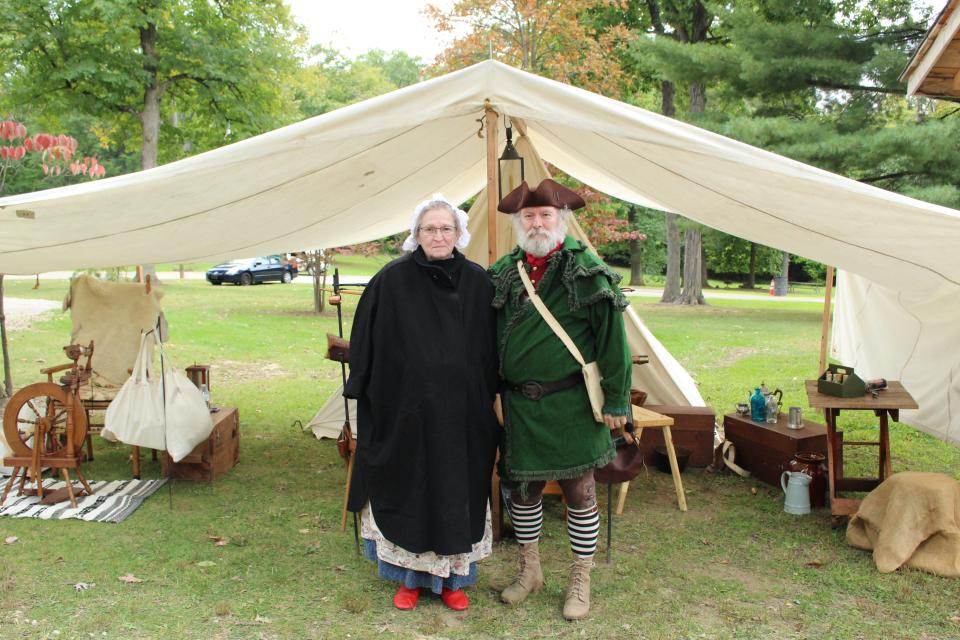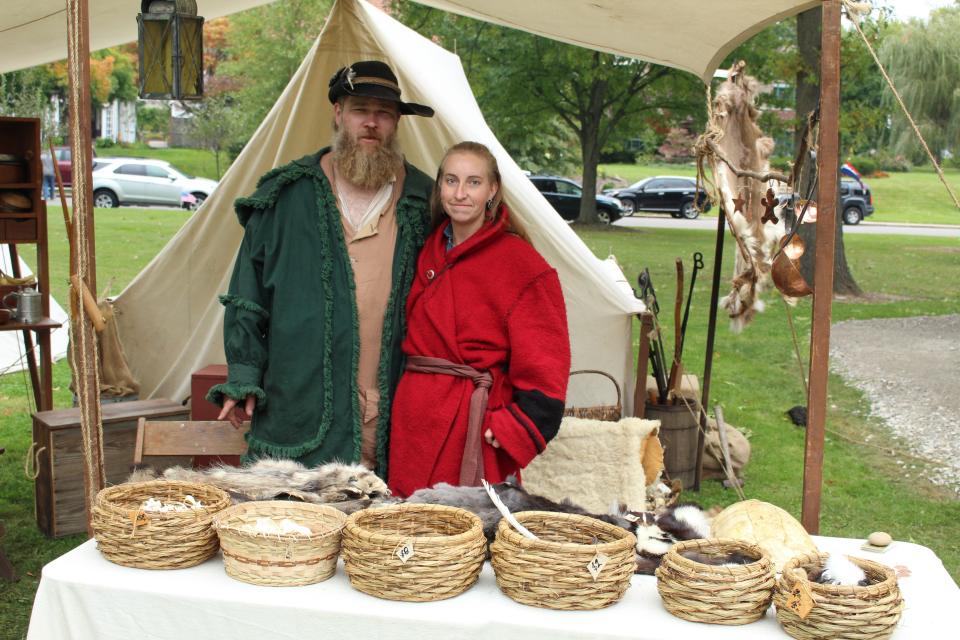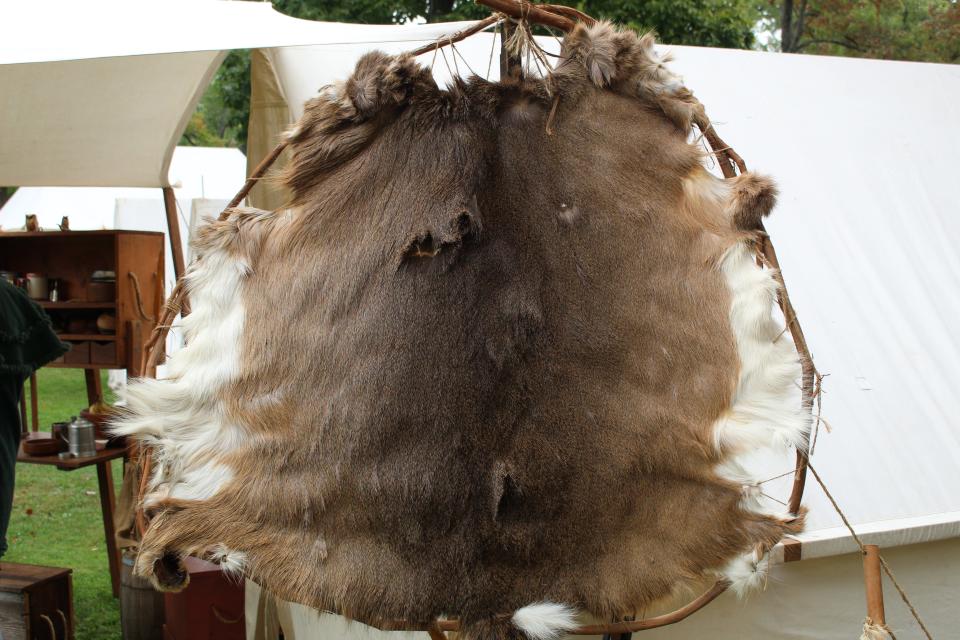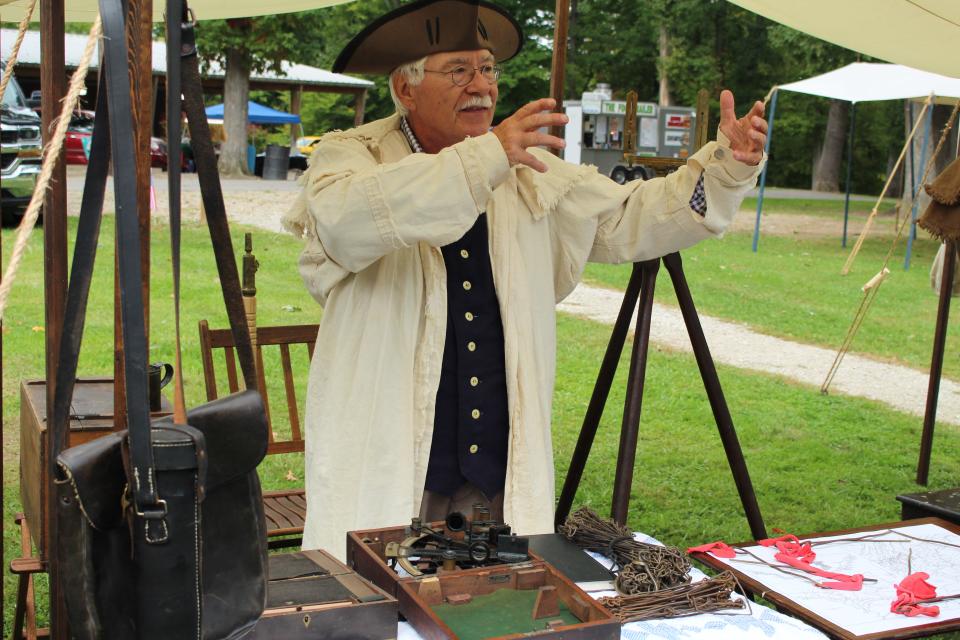Wool spinning, kitchens, fur trade in 1700s highlighted at American Heritage event
For people who enjoy learning about history of the 18th and 19th centuries, the American Heritage Days event Sunday at the Block House in Mansfield's South Park was just the place to be.
Put on by the Richland County Early American Center for History, the event provided history lessons. There were a number of reenactors and presenters on hand.
"This is our second year doing this event," said Cheryl Ross-Clark. "I talk about the different spinnings. Spinning wool into threads that will go into fingerless gloves and stockings in the 18th century."
Ross-Clark's husband, David Webb, has been reenacting for 46 years. The two specialize in the 1760s time period.

"He does presentations on typical kitchens in the 1760s," Ross-Clark said.
"Overview of life prior to the American Revolution," Webb said. "It was literally the Wild, Wild West of Colonial America."
Other stations included blacksmithing and carpentry shops.
Mark Cory and his wife, Tami, occupied an area where the history of Colonel William Crawford, Crawford County's namesake, was presented.
"I've been a reenactor since 1989," said Mark Cory, a retired history teacher from Colonel Crawford schools. "We've been here since they began this event."
Cory said both he and his wife are a part of an history-related organization called Brigade of the American Revolution and they specialize in the era of 1775-1783, the duration of the American Revolutionary War.
"I narrate the story of Colonel Crawford's campaign in the Sandusky River Valley in 1782," Cory said.
Lee Cox and Samantha Tanner had an area where there were hats, blankets, pillows made from foxes, rabbits, raccoons, possums and muskrats. There was even a large deer hide rug.


"This was all in the fur trade," said Tanner, who specializes in nuisance animal control.
Jeremy Snyder talked about prehistoric bow and arrows and flintlock rifles.
"It wasn't the best-made gun, but it was for the average farmer during that time," said Synder, who specializes more in the 17th century.

David Ingram discussed the role public land surveyors played back in the 1700s and 1800s.
"Public land surveyors used equipment like tripods, sextants, pens, ink wells, compasses for direction and chains from the 1800s (made in America) and 1600s to measure distance," Ingram said.
This article originally appeared on Mansfield News Journal: American Heritage event presenters spin stories about back in the day

